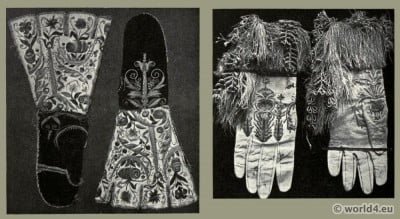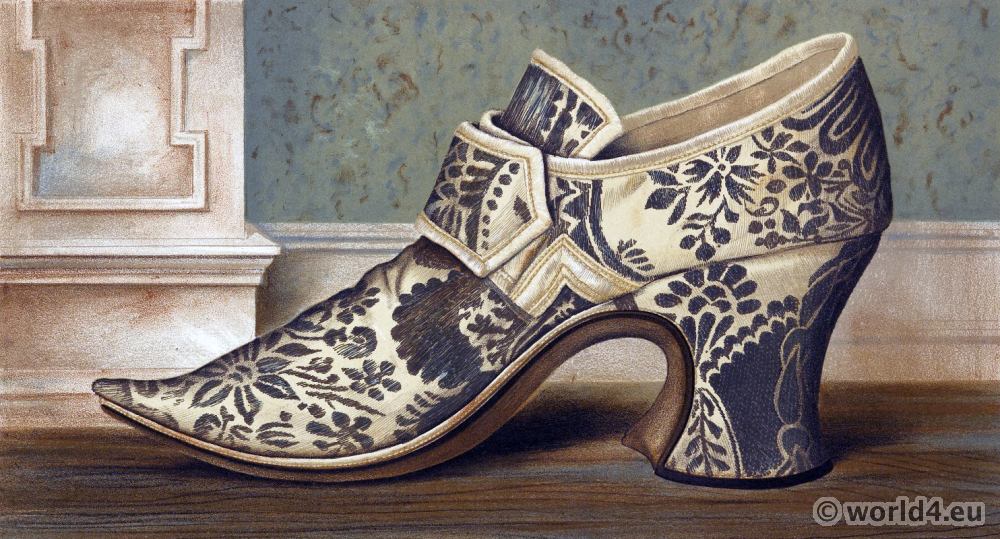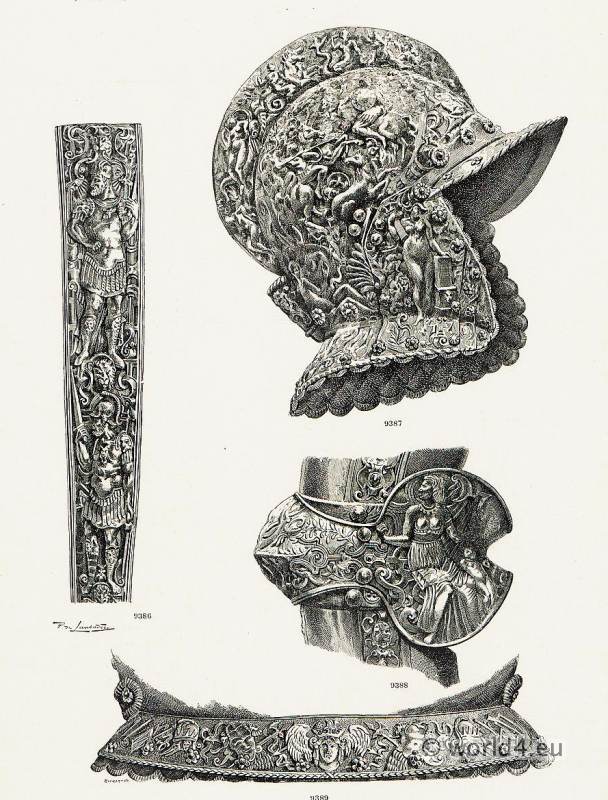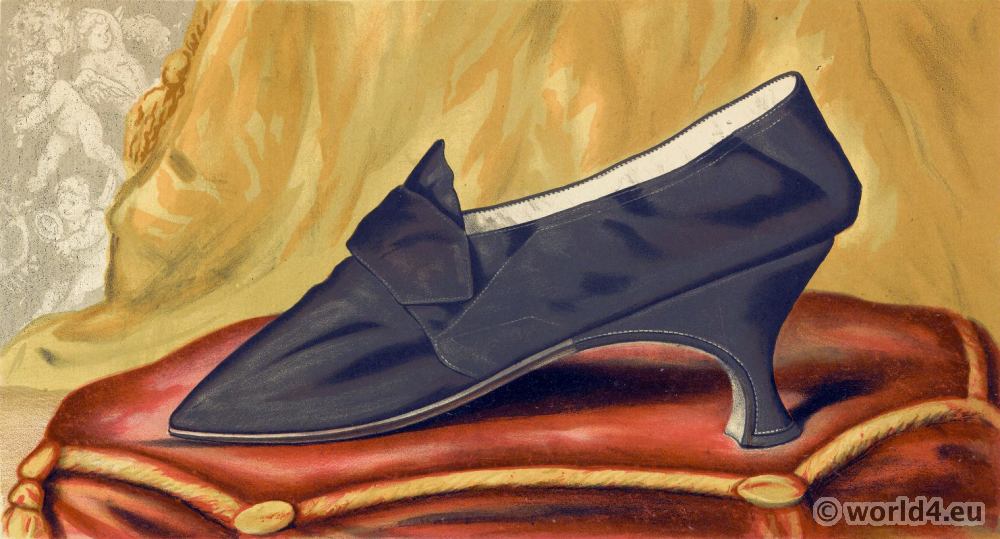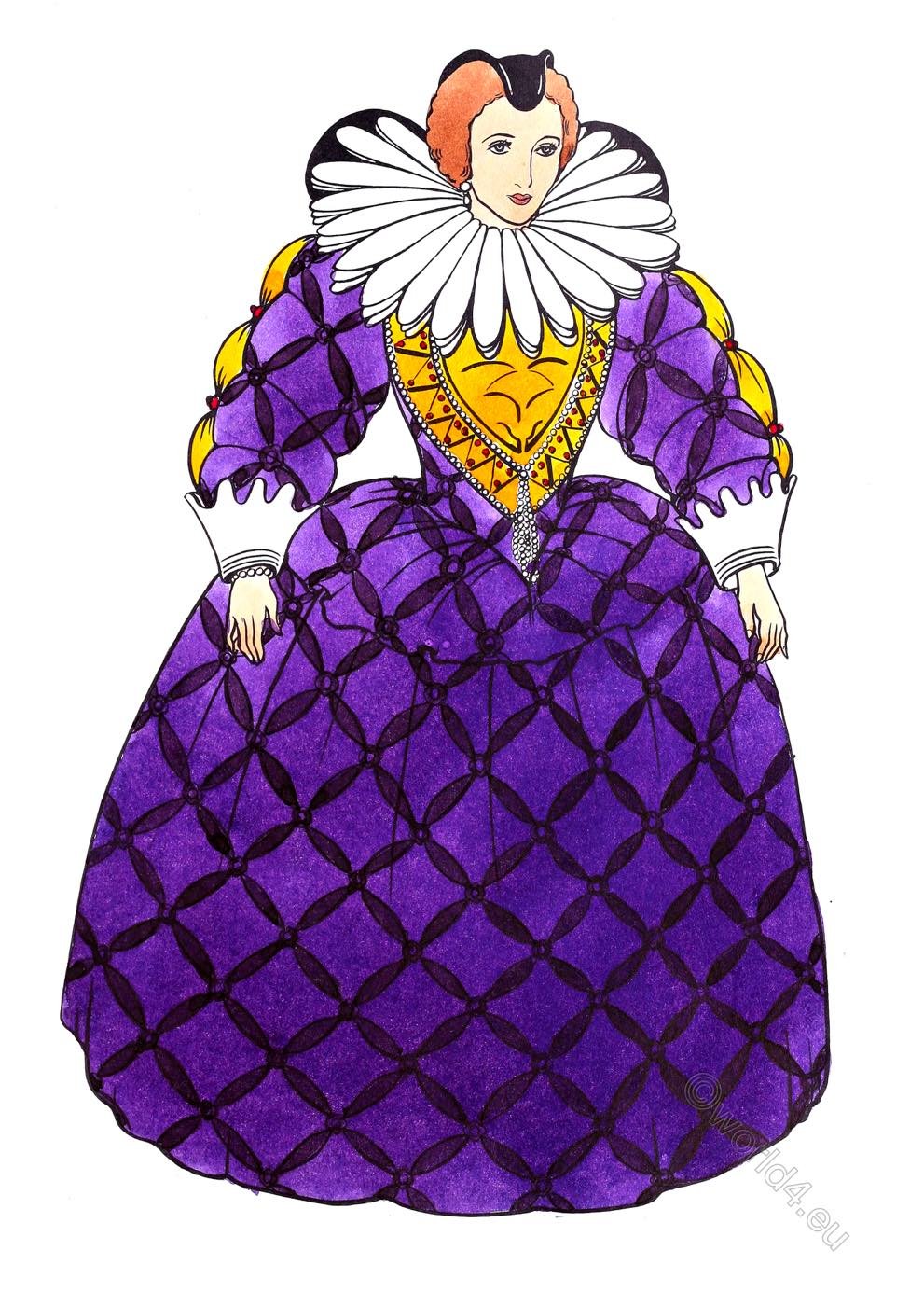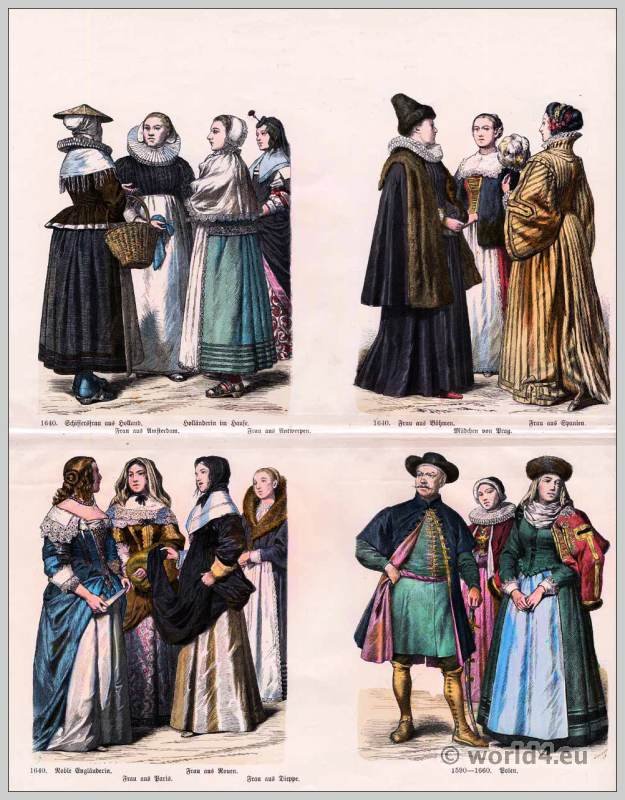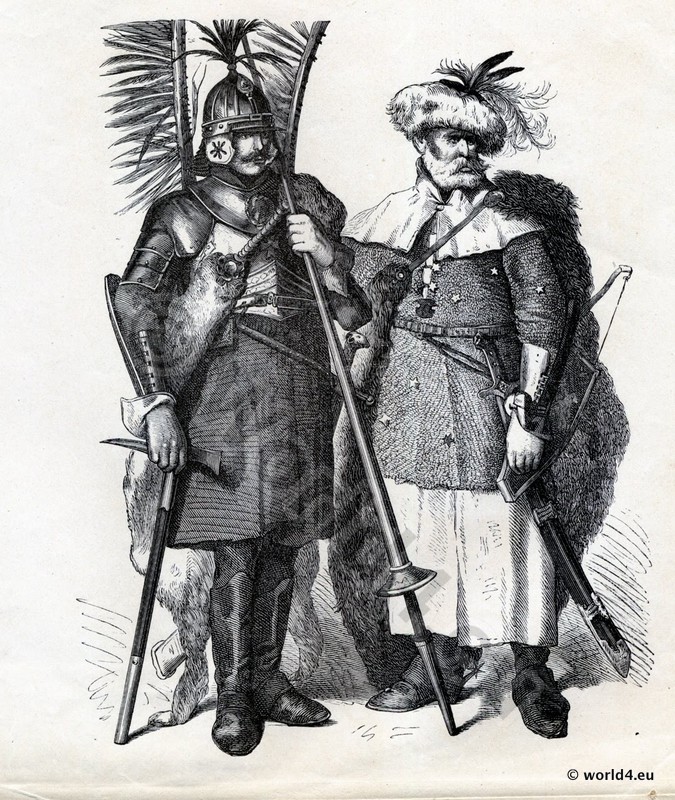Gauntlets and gloves. England 16th century.
Tudor fashion era.
Left: England second half of 16th century. Pair of mittens of crimson velvet with white satin gauntlets, embroidered with colored floss silks, gold and silver thread and gold cord. The gold and silver threats are couched, and shading and satin stitches are used. The edges are trimmed with gold braise. The transverse slits are to allow the fingers to be withdrawn.
Said to have given by Queen Elisabeth to Margaret Edgcumbe, wife of Sir Edward Denny, Kt. Banneret. (In the Victoria and Albert Museum, London)
Right: Early 18th century. Pair of gloves of buff leather, embroidered with gold and silver threads and spangles, and trimmed with very heavy gold fringe and bullion. The gold is couched with yellow silk. Gloves oaf this type were worn at the time of the Battle of Blentheim. The Battle of Blenheim on 13 August 1704 was the first major conflict in the War of Spanish Succession. The English form Battle of Blenheim likely to be because the British troops used French spotters. Their pronunciation of the name of the hamlet of Blindheim (near Höchstädt on the Danube) led to the English form Blenheim.
Related to:
Louis XIII fashion era. French Ancien Régime. Renaissance fashion history, Tudor fashion era.
- Reigns of John and of Charles V. 1350 to 1380. (Medieval, Byzantine, Gothic)
- Reigns of Charles VI. and Charles VII. 1380 to 1461. (Medieval, Gothic, Burgundy)
- Reigns of Louis XI, Charles VIII, and Louis XII. 1461 to 1515 (Late Medieval, Burgundy, early Renaissance)
- Reign of Francis I. 1515 to 1545. (Renaissance, Tudor)
- Reign of Henry II. 1547 to 1558. (Tudor, Renaissance)
- Reign of Francis II. 1559 to 1560. (Tudor, Renaissance)
- Reign of Charles IX. 1560 to 1574. (Tudor, Renaissance, Spanish court dress)
- Reign of Henri III. 1574 to 1589. (Renaissance, early Baroque, Spanish court dress, Tudor)
- Reigns of Henri IV. and Louis XIII. 1589 to 1643. (Renaissance, Baroque)
- Reign of Louis XIV. 1643 to 1715. (Baroque)
- Reign of Louis XV. 1715 to 1774. (Rococo)
- Reign of Louis XVI. 1774 to 1780. (Late Rococo)
- Reign of Louis XVI. 1780 to 1789. Le Pouf. Fashion in the Ancien Régime.
- The Reticulated Headdress. 15th century. Medieval Burgundy era.
- The Hennin. 15th century. Medieval Burgundy era.
- Costumes de Noblesse du 14ème siècle. Histoire de la mode médiévale.
- Gabrielle d’Estrées, mistress of the French King Henry IV. 16th century, Renaissance fashion era.
- Henri de Lorraine, duc de Guise. France 16th century. Huguenot wars.
- Madame de Pompadour. Her political power and general influence to Louis XV. Rococo era.
- 15th century medieval room interior. The history of Tobit. Historia Scholastica.
- The Corset and the Crinoline. Introduction of Cottes-Hardies. The Ladies of Old France.
- Pictures and Royal Portraits Illustrative of English and Scottish History.
- Les Modes de la Renaissance de l’an 1461 à l’an 1574.
- The Corset and the Crinolin.
- Characters of The Commedia dell Arte. Italian Renaissance Theater.
- The Rise of Monachism. Monastic costumes history.
- On the history of costumes. Fashion gallery from ancient until the 19th century.
Discover more from World4 Costume Culture History
Subscribe to get the latest posts sent to your email.

